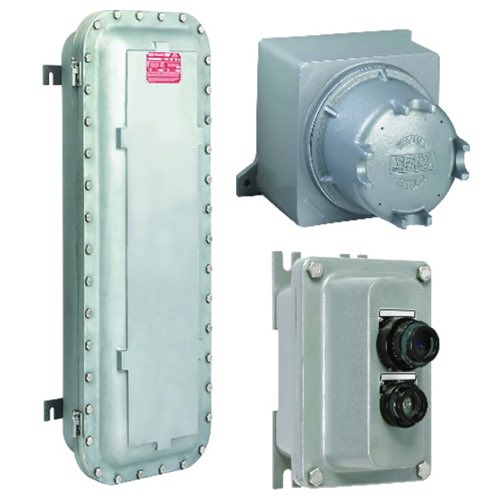Killark Enclosures

Killark enclosures are tailor-made to satisfy the exacting requirements of severe and dangerous surroundings—such as chemical and petrochemical plants, oil refineries, and various other processing facilities. These explosion-proof enclosures deliver tough protection from flammable gases, combustible dusts, and other hazardous materials, thus allowing for safe operation under extreme and unstable conditions. Killark enclosures, made from sturdy materials like cast aluminum, not only withstand serious environmental challenges but also resist corrosion and have a long working life. All these factors make them prime candidates for use in applications located in harsh and hazardous areas.
Killark, a premier manufacturing entity under Hubbell, provides both standard and specialized control solutions for hazardous locations. Its enclosures are employed in a multitude of industrial applications—control panels, junction boxes, etc.—to beautifully and securely house electrical and electronic components. And when it comes to safety, Killer's got 'em beat. Most of the enclosures meet, or exceed, all safety standards required for operation in hazardous environments like oil rigs, chemical plants, or coal mines. Key to that is hub openings and conduit raceway fittings that allow for not just efficient, but safe, installation and maintenance.
FAQs
Is Hubbell Killark the leading manufacturer of electrical construction products designed to withstand flammable gases, combustible dusts and hazardous substances found in petroleum refineries and storage areas?
Yes, Hubbell Killark is a leading manufacturer of electrical construction products specifically designed to withstand flammable gases, combustible dusts, and hazardous substances commonly found in petroleum refineries and storage areas.
Do Hubbell Killark enclosures come with installed standard and custom controls at a reasonable price?
Yes, Hubbell Killark enclosures are available with installed standard and custom controls, designed to meet various industrial needs at a reasonable price.
Enclosure Selection Basics
Electrical enclosures are cabinets that are designed to house electrical components and electrical controls. Their main function is to protect the components, as well as to protect the operators from electrical hazards and ensure electrical safety. Enclosures are typically made of solid plastics, fiberglass, and metal materials, such as carbon steel, stainless steel, and aluminum, to provide robust protection for electronic controls and electronic equipment.
One of the most important things to consider when selecting an electrical enclosure is the NEMA rating. NEMA stands for National Electrical Manufacturer Association. They have developed a rating system which determines the types of environments an electrical enclosure can be used in.
NEMA 1 and a NEMA 12 enclosures
Both of these enclosures are intended for indoor use only. They are both dust resistant. The NEMA 12 enclosure is rated for damp environments. The NEMA 1 is rated only for dry environments.
NEMA 4 and NEMA 4X enclosures
Both of these enclosures can be used indoors as well as outdoors. They are both dust resistant. They are also water resistant and corrosion resistant. NEMA 4X has an extra layer of corrosion resistance.
NEMA 7 enclosures
This is a more specific type of enclosure that is rated for use in hazardous environments. It is rated to contain an explosion within the enclosure and not cause any sort of external hazard.
Size
When selecting the size of an enclosure, it is important to consider the following: how much space will the electrical components occupy, how much space is needed around each component, is there enough room to run all of the wires and how much space is needed outside of the enclosure?
Temperature
When selecting an enclosure, it is important to consider both the ambient temperature and the temperature that is generated inside of the enclosure. When an enclosure is located outside in direct sunlight, that heat can be transferred inside the enclosure. Also, each component inside of the enclosure generates a certain amount of heat.

